The Martin Sisters
Frances and Edith Martin – Topographers of Coddenham
The Martin sisters Frances Augusta (1846-1923) and Edith Philadelphia (1848-1937) were not born in Suffolk yet left a collection of drawings of their adopted home that has considerable historical value. In this they emulated the deservedly more celebrated John Constable in his native area.
Daughters of Francis Offley Martin (1805-1878), a barrister-at-law in London, they were brought up in considerable privilege. Edith married her namesake Henry John Martin, a Royal Navy officer, in 1874. He was related to the Martin family of Hemingstone Hall, as indeed were they. Francis Offley Martin is named in the will of William Martin (proved 1843) as ‘my nephew’. William Martin’s brother was Admiral Sir George Martin. In the admiral’s will Henry Martin appears as his late brother, suggesting that Edith had married his great nephew. A daughter, Edith Mary Verner Martin was born in 1875. Henry died, aged only 35, in 1876, while serving in HM Customs..
Twice bereaved, Edith joined her sister and mother at the Cottage, Coddenham (now Church House), one of the properties of Henry’s family. In 1885 a legacy of £3000 each (£150,000 today) with Edith’s naval pension would have provided a comfortable life in the village. In those days almost all food and many clothes were locally produced. A memoir of life in Coddenham at that time was produced by a younger Edith Martin, probably of the Hemingstone family, in the 1960s. Her source is not acknowledged.
The sisters enrolled at Ipswich School of Science and Art and passed its examinations. They produced a sketchbook of scenes in Coddenham during their period of study. In the possession of Coddenham Village History Club, these scenes offer an instructive comparison with the village we know today. A printed version of their sketchbook was sold to raise funds for church restoration in 1886-1887. It was reprinted in 1992 for the Flower Festival by the History Club. In the following pages their drawings are compared with photographs made recently.
The Church
The drawing of St Mary’s church (below) was made by Edith in 1886. She had previously had a painting with that title exhibited at the Ipswich Art Club in 1882. The same, or one similar, was shown in 1884 along with ‘Coddenham Vicarage’.
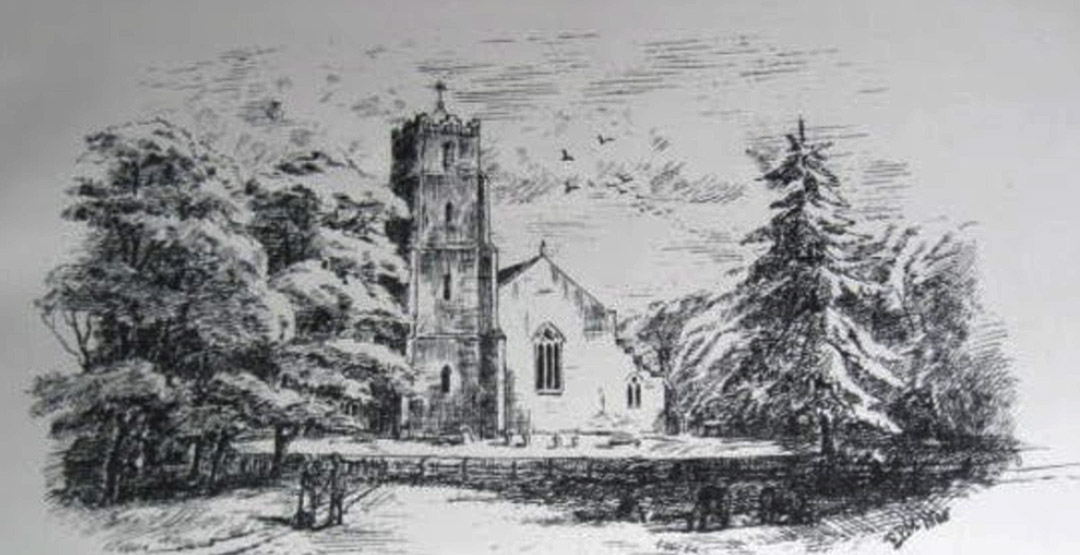
A photograph attempting to offer the same view includes Church House (the Cottage) in the distance.
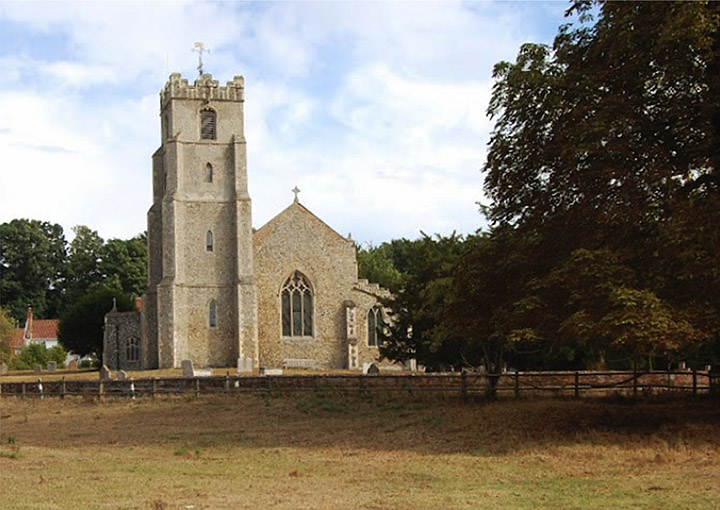
Changes to the Church
The sketchbook also includes studies of the church tower and porch, with views from various parts of the churchyard and Broom Hill. These are of particular interest because they predate two restorations, of the nave and aisles from 1886 (that the sketchbook was sold to support) and by Ernest Geldart in 1894. Again, the later Edith Martin’s memoir refers to these restorations and mentions the difference churchgoers would have experienced.
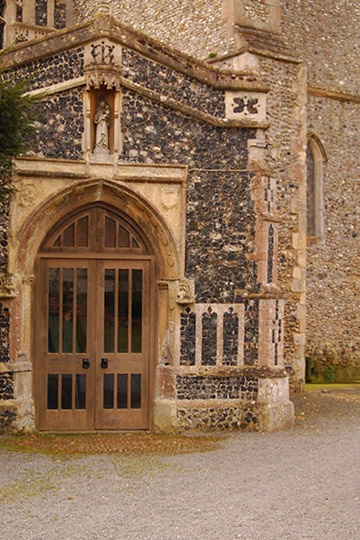
A statue of the Virgin Mary above the porch entrance was among the features not visible to Edith when she drew the studies below. The statue and monogram ‘M’ show clearly in a recent photograph. These were the work of Geldart, a High Anglican priest and architect.
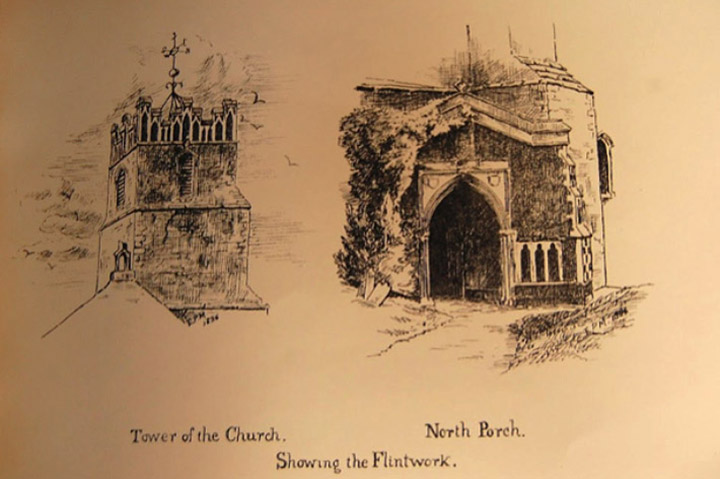
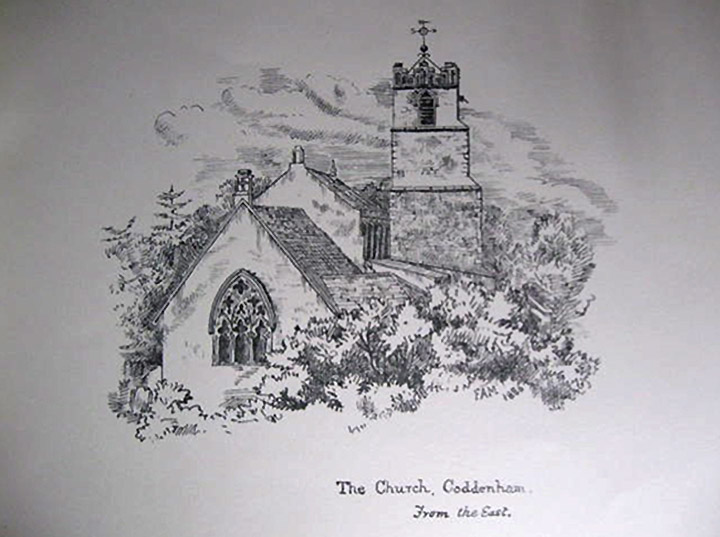
One feature that was visible to Frances in 1886 was the vestry, then on the north side of the chancel. A nineteenth century photograph (below) shows the vestry more clearly. The churchyard seems to have been a pleasurable site for a leisurely afternoon outing or perhaps an open-air scripture lesson for children.
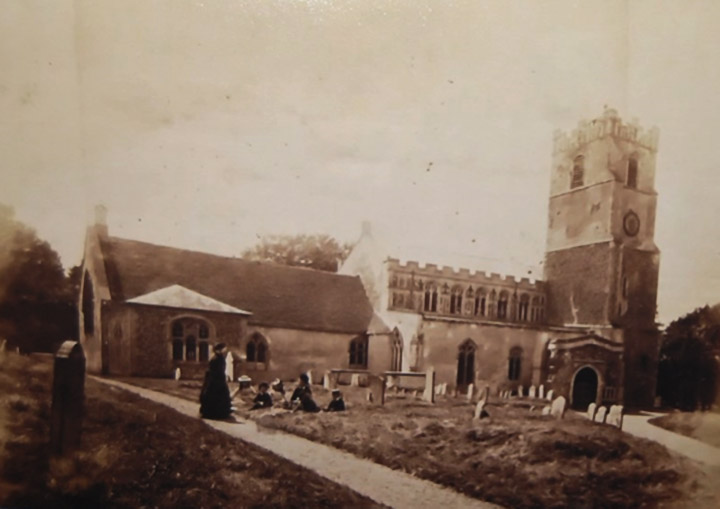
A recent photograph shows a window where the vestry once stood, as well as a small window from the Anglo-Norman church, uncovered during a restoration.
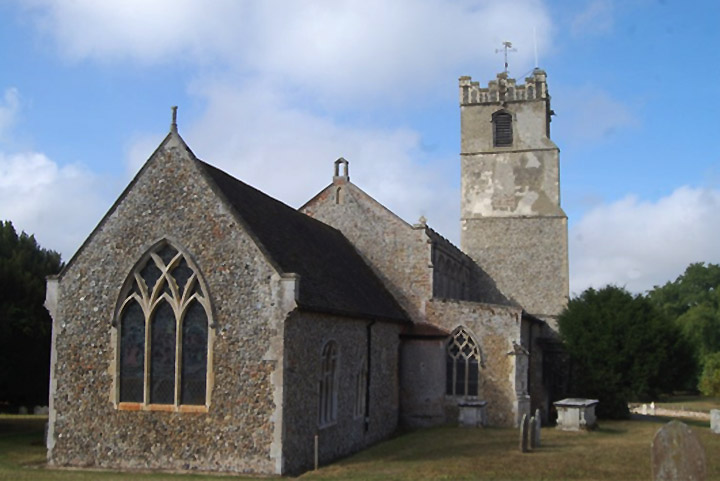
The Martin family would have found the interior of the church very much as in this old photograph.
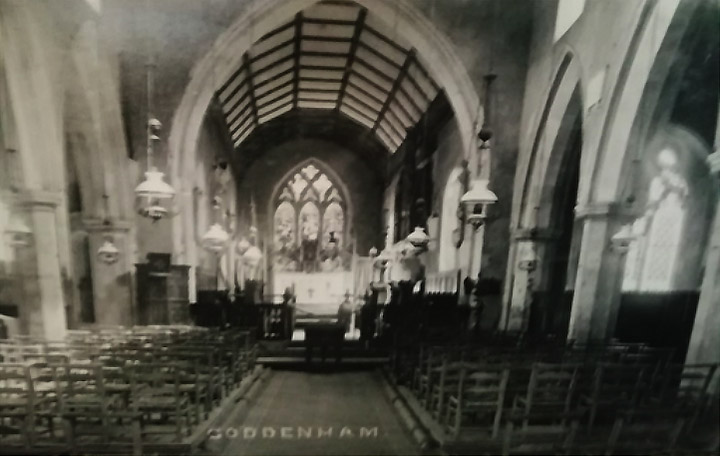
They would also have seen the alabaster crucifixion on display: it is now “in a secure place”. Both images, and other Victorian photographs, can be seen in the church.
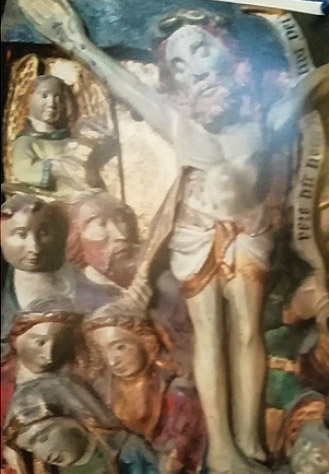
The later memoir mentions box pews throughout the church and a stove in the Shrubland pew, occasionally disturbing worshippers when Sir George Broke Middleton poked the coals, while the sexton beat time for the hymns. One of the Wiseman sisters, of what is now Churchgates House, would play the organ.
Changes in the landscape
Whether Broom Hill in the 1880s was as heavily wooded as today is difficult to determine. Without trees the view presented below might have been possible. It is so no longer.
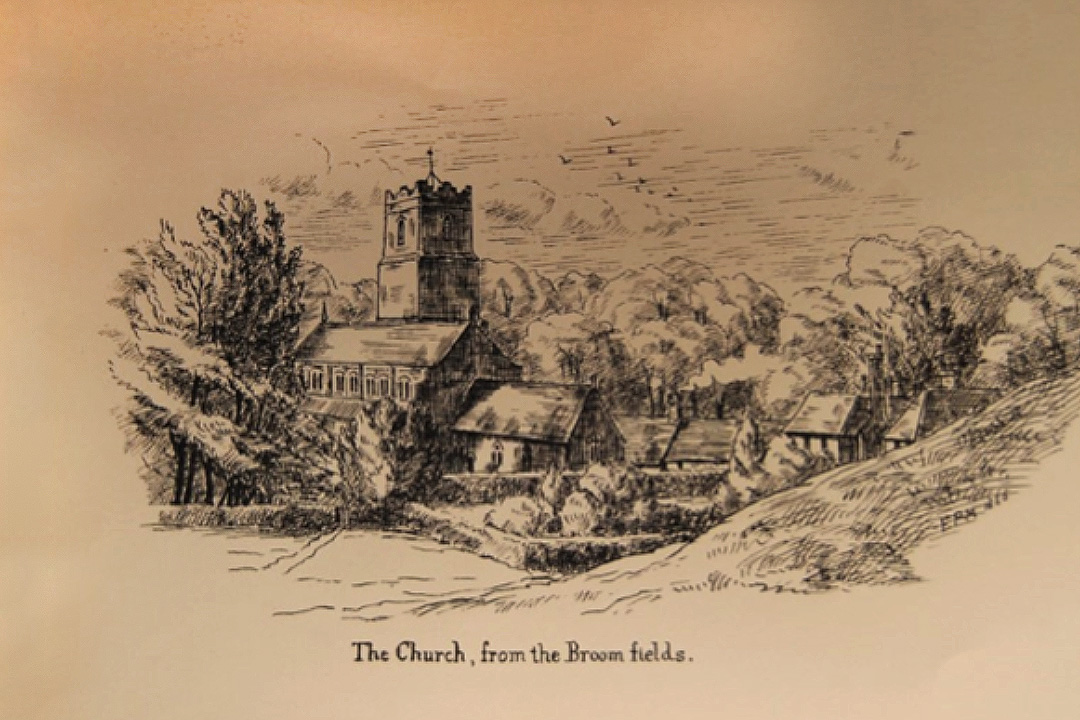
Edith showed (from right) the Cottage roof, Manor Farmhouse and Church Cottages in this study. The Vicarage, as it was known to the sisters, is hidden by trees (perhaps added for artistic effect).
This is the nearest equivalent view, from the highest part of the churchyard; it shows the vestry, now on the south side of the chancel.
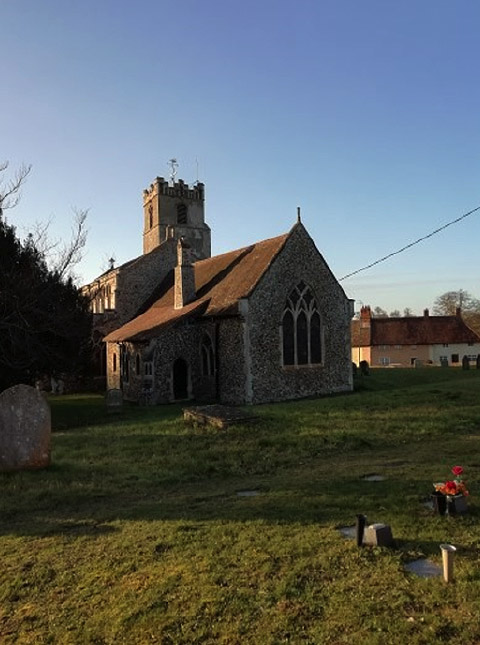
This is Edith’s view of the Vicarage, now Coddenham House, from within the garden.
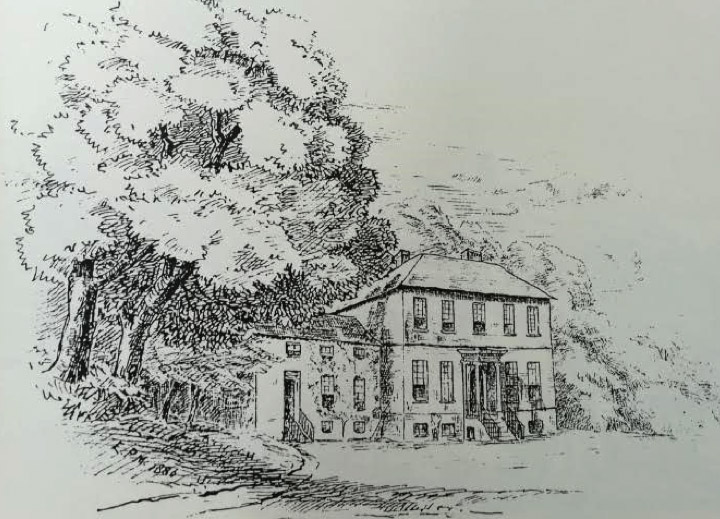
It is not much changed, as shown below from the drive.

A view from the church gates shows the dairy of Manor Farm on the left, the Pink House and Dower House in the distance with the windmill on Mill Hill. The mill was demolished in the early twentieth century although some of its machinery remains.
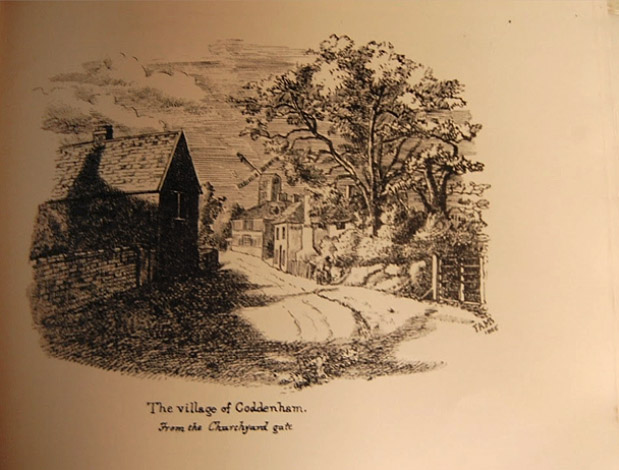
Apart from the road being surfaced with one inch (25 mm) of tar and chippings in the 1920s little has changed. Modern road treatment has increased its depth to 50 mm, laid in the 1990s according to Donald Burton, and of course there are cars in use.
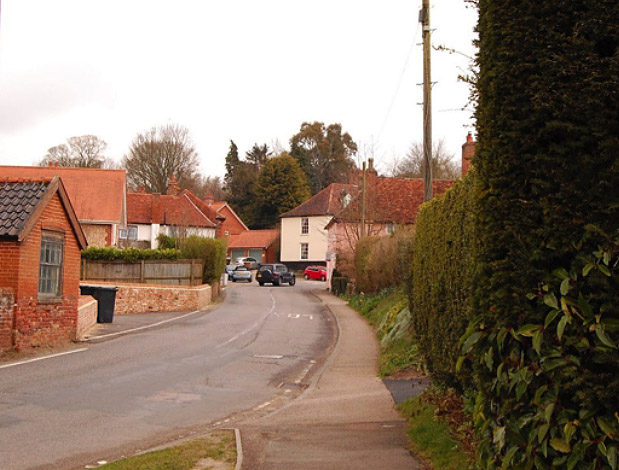
Village amenities
From outside the Pink House (risky today) Frances drew the post office with a cottage that has since been faced with brick and another that has been demolished. Further along School Road is Monk Cottage. The sisters would perhaps have known the story of the eccentric cleric who had the cross and date inscribed on one of its bricks.
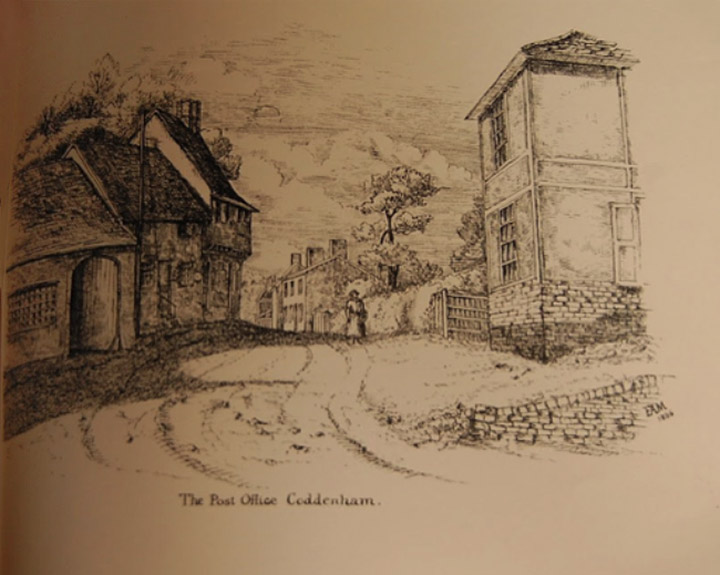
The current view with the post office, back in the shop (part time) after some years at a cottage, still called the Old Post Office, next to the Old Lodge.
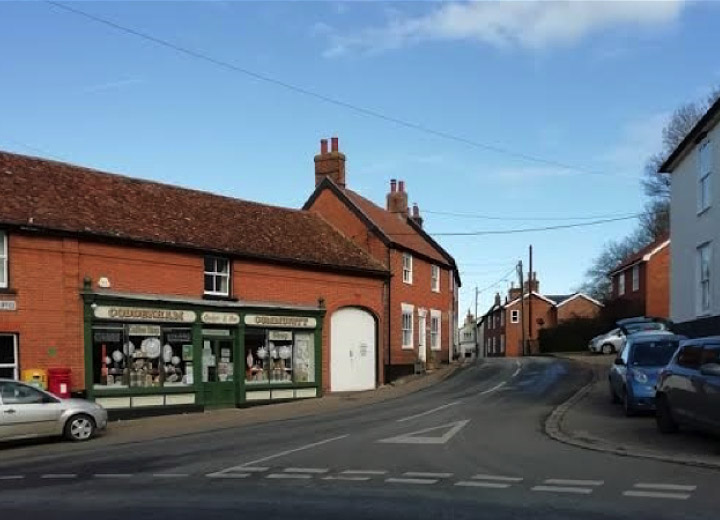
These buildings have scarcely changed although their use has. The former Crown Inn has now resumed its much earlier name, Gryffon House.
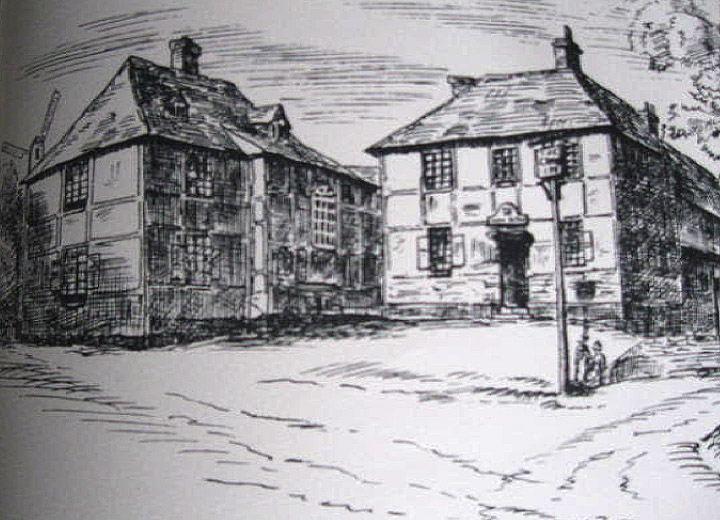
The inn sign seen above the door in Edith’s drawing is in the safekeeping of the present owners. It seems likely the two buildings were at one time used by a single proprietor.
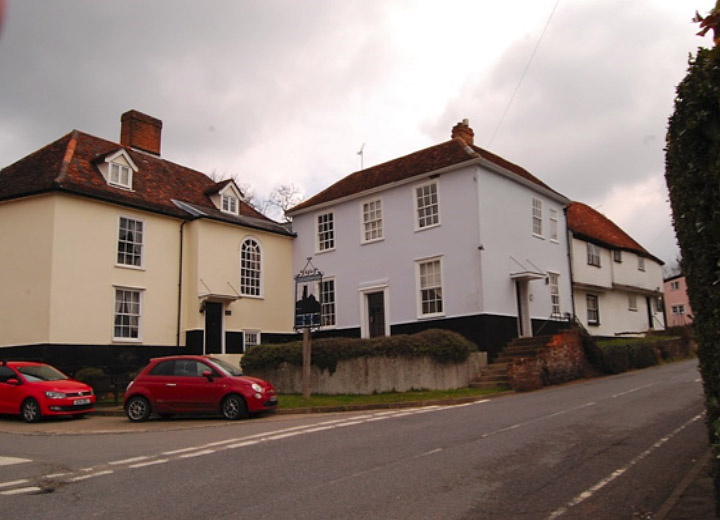
A village sign as opposed to the inn sign was commissioned by Canon Lummis, whose archive formed the basis of the records of the Village History Club. The later Edith Martin mentioned the Crown and Live and Let Live as pubs no longer in use although the Duke’s Head was still open.
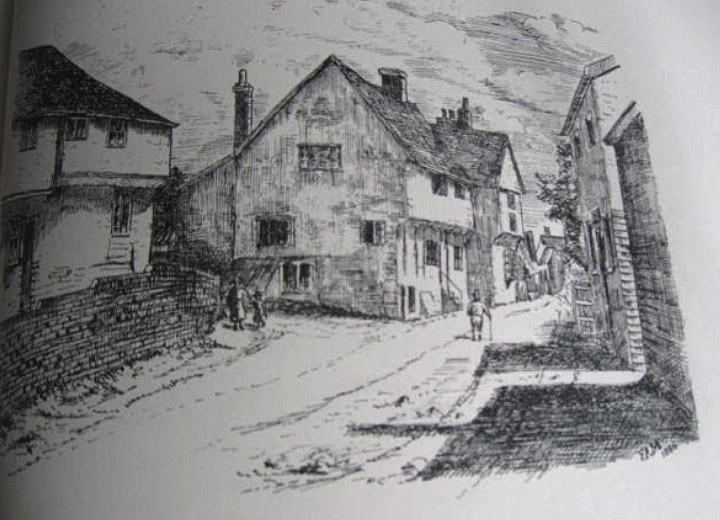
Frances labelled her drawing ‘Old Houses in Coddenham’. Interestingly she did not show the sign on the Live and Let Live that was visible until early in the twentieth century.
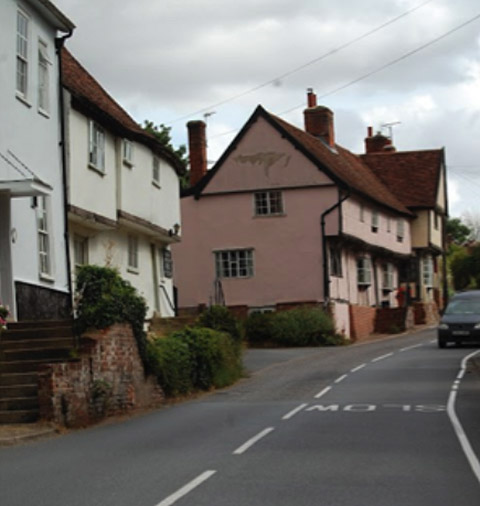
A horizontal line just below the far gable may have represented part of its frame. She exhibited a watercolour with the same title as Mrs Nunn, following her marriage to Lindley Nunn in 1892. He died at their home, West Lodge, Ipswich in 1901, aged 75.
Views that have changed greatly
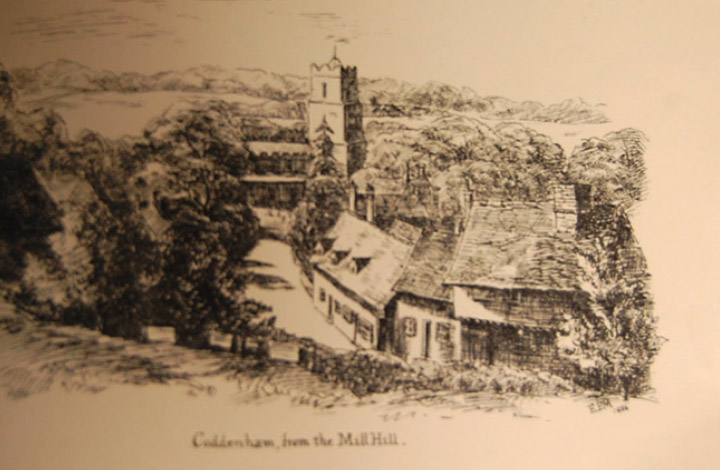
This view from Mill Hill by Edith is obscured by trees today; there is however an old photograph offering a similar scene.
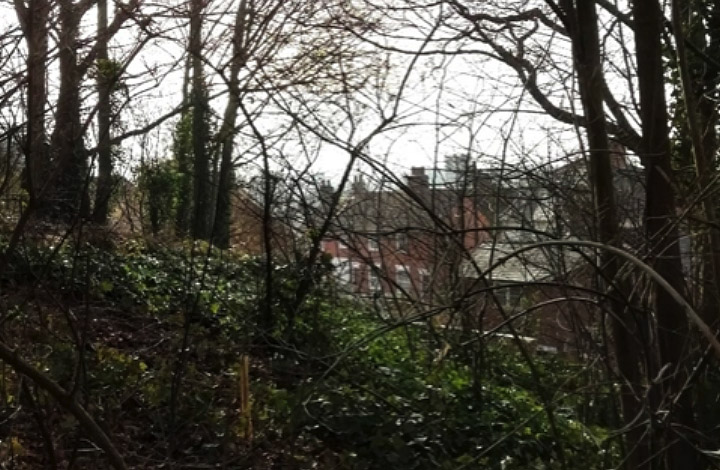
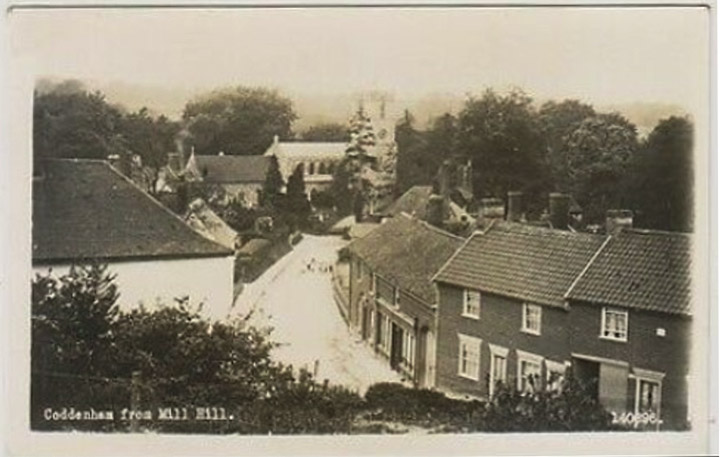
Later Life
Ten years after her husband’s death Frances became a patient at a private hospital in Sevenoaks, Kent, moving afterwards to Park Road, Wandsworth, where she died in 1923, aged 77.
Edith was the principal resident at the Cottage in the 1911 census return. Later she moved to Hemingstone Hall, where she died in 1937, aged 85. Her daughter Edith Mary moved to Cornwall, her birth county, where she died at Liskeard in 1946.
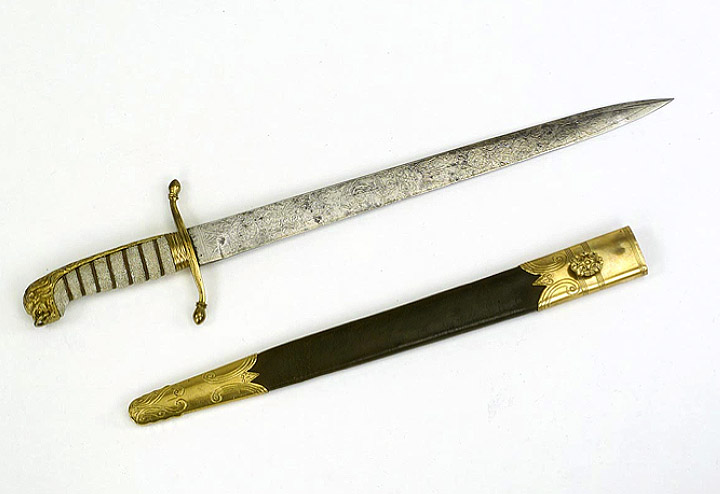
She had earlier presented her father’s dirk, awarded on his appointment as midshipman, to the Maritime Museum, Greenwich.
JOHN PELLING:HISTORY RECORDER:CODDENHAM:APRIL 2023